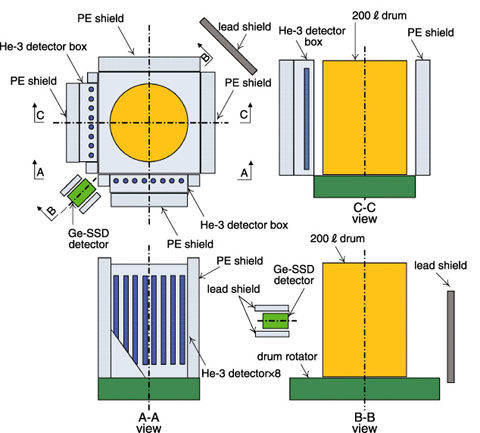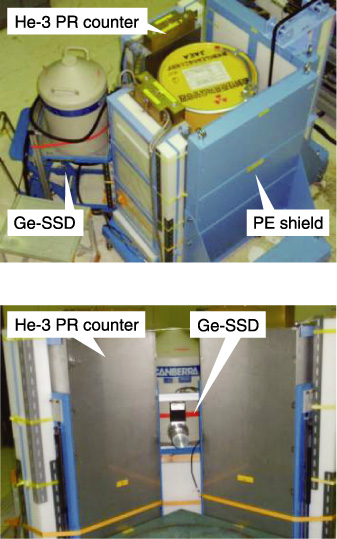
Fig.12-29 The structure of Ningyo Waste Assay System (NWAS)

Fig.12-30 The outer and inner views of NWAS
We developed a uranium mass assay systems for 200 L wastes drums generated in Ningyo-toge applied neutron measurements by the nondestructive assay (NDA) method; the system is named Ningyo Waste Assay System (NWAS). The system is composed of 16 helium-3 proportional counters for neutron detection and a high purity Ge solid-state detector for gamma- ray detection (Fig.12-29, Fig.12-30).
The key methodologies of the measurements are the spontaneous fission neutrons derived from U-238 and the (α,n) reaction generated from α-particles from U-234 captured by low-Z elements, including a particularly large proportion of fluorine atoms. The (α,n) reaction rate may increase with uranium enrichment, so gamma- ray energy spectrometry is required for each drum. The advantages of neutron measurements are the good penetration of neutrons through high-Z matrices such as steel, and the relatively higher counting efficiency. Both these advantages make this process better than the γ-ray assay for uranium.
The extensive mock-up testing trials were performed using calibrated uranium powder sources of different enrichments and with different kinds of matrices (such as sodium fluoride pellets, alumina pellets, steel bars, and so on) in drums. Through a series of tests, the calibration factors, i.e., neutron counts versus uranium masses, were obtained.
Through the mock-up testing we were convinced of the relatively low levels of uranium mass (up to 10∼20 gU), which varied according to the uranium enrichment or the drum matrix of drums.
Applying the above factors, we have then attempted the measurements of actual wastes drums stored in the Uranium Refining and Conversion Plant at Ningyo-toge. The chemical features of the facility are mainly characterized as uranium fluorides compounds, so the chemical form of the uranium wastes is also characterized as uranium fluorides compounds. NWAS is perfectly suited for the measurements of such wastes.
We have applied NWAS to the following activities: (1) the establishment of material accountancy, and (2) the determination of bulk material from the facility in the wastes drums. Further extensive use is expected if accuracy is improved. Our current work focuses on these challenges.
Our research was accomplished with the support of Los Alamos National Laboratories.